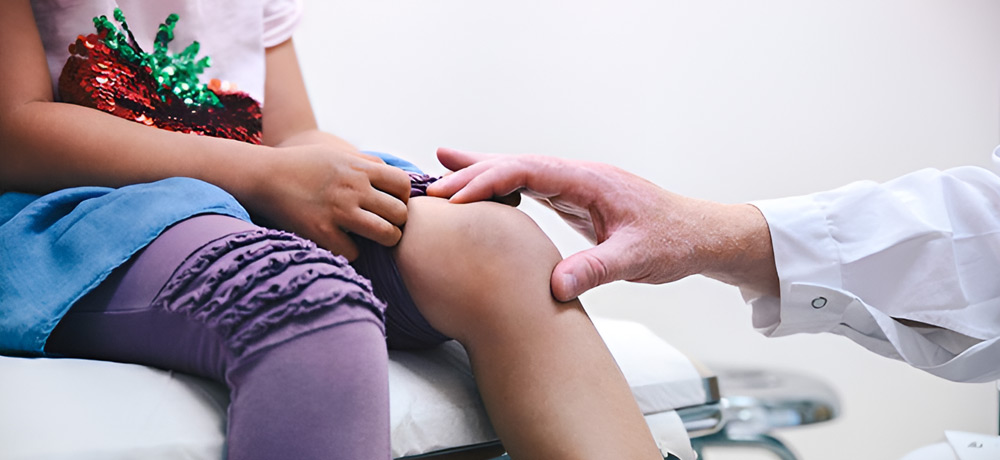
What is Juvenile Arthritis?
Juvenile arthritis (JA) is a term used to describe arthritis in children under the age of 16. It is a chronic condition that causes inflammation in one or more joints, which can lead to pain, swelling, stiffness, and loss of motion. There are several types of juvenile arthritis, the most common being Juvenile Idiopathic Arthritis (JIA). The symptoms of juvenile arthritis can vary depending on the type and severity of the condition
Types
Juvenile Idiopathic Arthritis (JIA) – It is the most common form of arthritis. It includes 6 sub types - oligoarthritis, polyarthritis, and systemic, enthesitis-related, juvenile psoriatic arthritis or undifferentiated.
Juvenile Dermatomyositis – It is an inflammatory disease that causes muscle weakness and skin rashes on eyelids and knuckles.
Juvenile Lupus – It is an autoimmune disease which affects the joints, skin, kidneys, blood and other areas of the body.
Juvenile Scleroderma – Scleroderma means hard skin. This condition describes a group of conditions that causes the skin to tighten and harden.
Kawasaki Disease – This causes blood-vessel inflammation that can lead to heart complications.
Mixed Connective Tissue Disease (MCTD) – This includes features of arthritis, lupus dermatomyositis and scleroderma.
Fibromyalgia – This chronic pain syndrome is an arthritis-related condition, which can cause stiffness and aching, along with fatigue, disrupted sleep and other symptoms. It is more common in girls and is seldom diagnosed before puberty.

Symptoms
- Joint Pain: Persistent joint pain that may worsen after activity.
- Swelling: Swelling in the joints, which may be more noticeable in larger joints such as the knees.
- Stiffness: Joint stiffness, particularly in the morning or after periods of inactivity.
- Redness and Warmth: The affected joints may appear red and feel warm to the touch.
- Fatigue: General fatigue and a feeling of being unwell.
- Fever: Unexplained fever not related to infections.
- Rash: Some types of juvenile arthritis are associated with rashes.
- Growth Problems: Delayed or uneven growth, as inflammation can affect the growth plates in the bones.
- Eye Inflammation: Conditions such as uveitis can occur, leading to redness, pain, and vision problems.
Causes
- Genetic Predisposition
- Autoimmune Response
- Environmental Triggers
Homeopathy Treatment for Juvenile Arthritis
Homeopathy is an ideal and widely used remedy for curing Juvenile Arthritis. Homeopathy believes in treating the person as a whole and not just the disease itself. It works by finding the root cause of the problem and treating it. And also focuses on improving the immune system of the body, thereby promoting the self healing process.
Constitutional Homeopathy Treatment for Juvenile Arthritis
Constitutional homeopathy treatment for juvenile arthritis focuses on addressing the specific symptoms and conditions of the young patient. Homeopathic treatments are tailored to each individual's needs, taking into consideration their overall health and well-being. The treatment aims to alleviate pain, reduce inflammation, and improve joint function without causing any harmful side effects. The treatment is also used for joint stiffness and pain that improves with movement.
